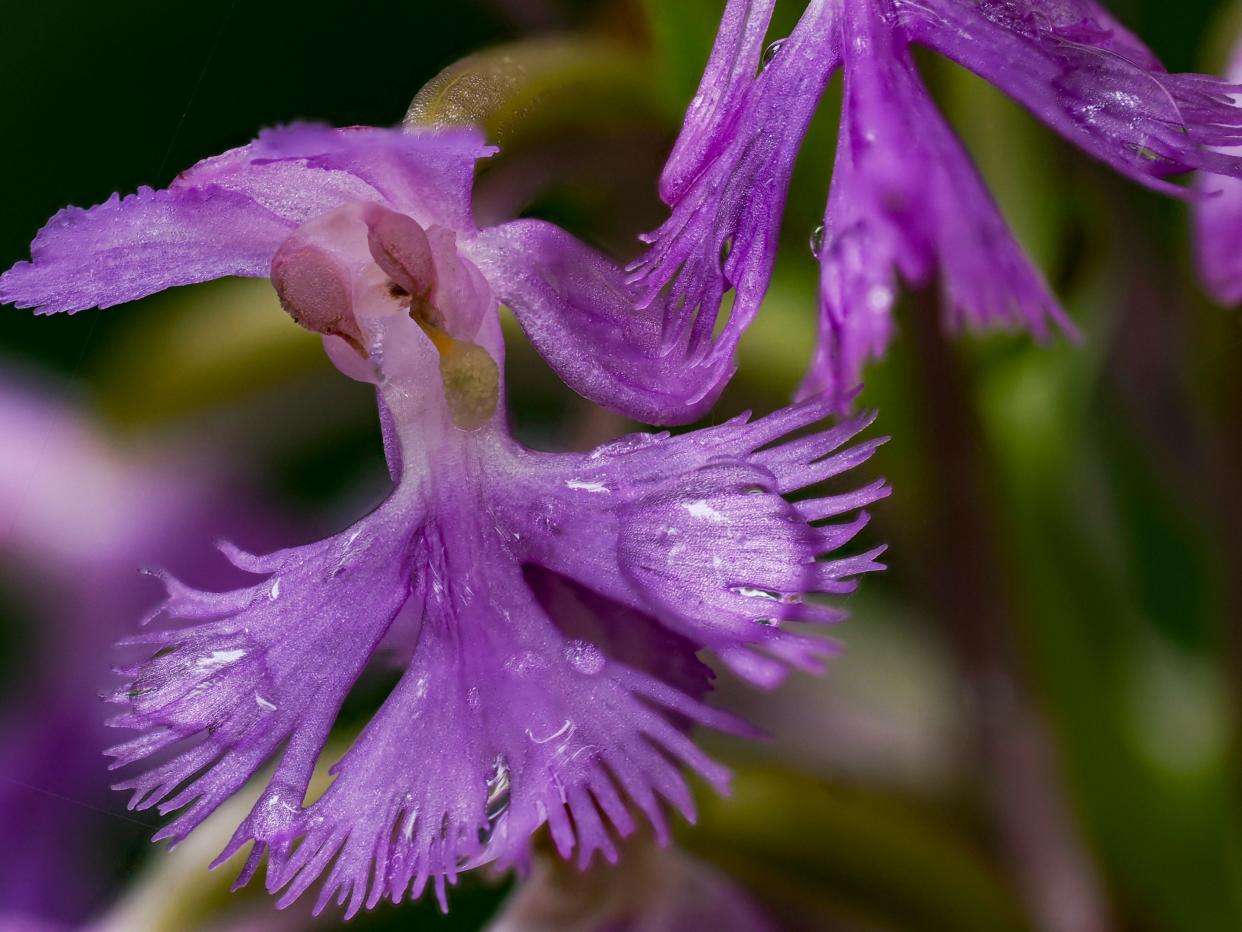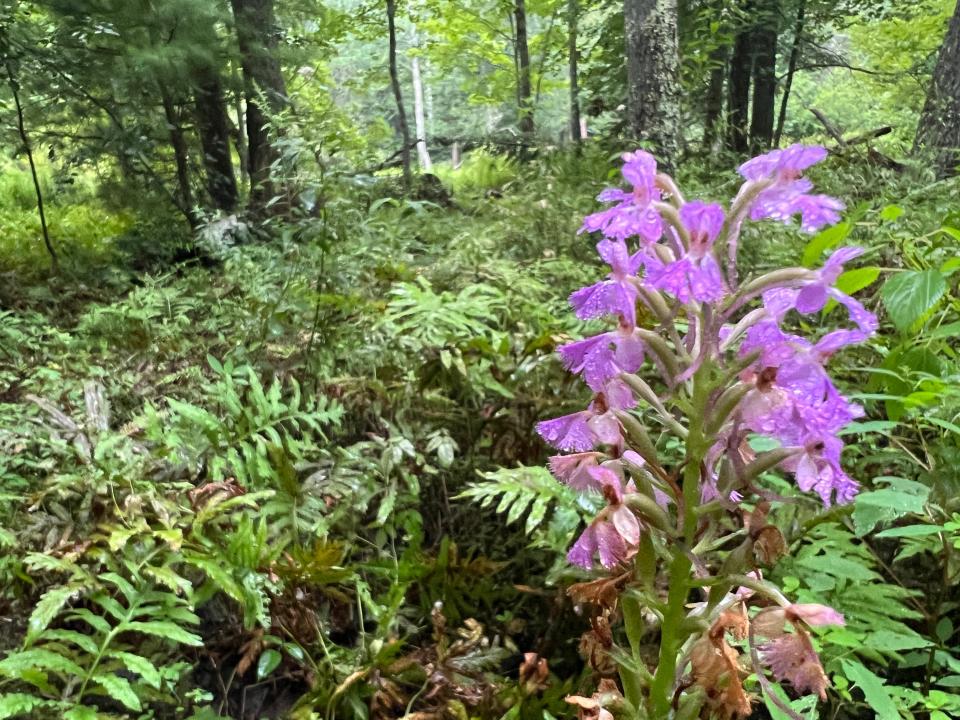Nature News: Orchids, the fairies of the plant world

I didn’t really have an opinion about orchids, other than knowing you have to be really into houseplants to keep them alive, until reading “The Orchid Thief: A True Story of Beauty and Obsession” by Susan Orlean, and then seeing “Adaptation” the movie adaptation of the book.
Because of this book and movie I have a romanticized impression (perhaps overly romanticized) of orchids. The line from the book “Life seemed to be filled with things that were just like the ghost orchid: wonderful to imagine and easy to fall in love with, but a little fantastic and fleeting, and out of reach” perfectly captures the appeal of orchids. They are like the fairies of the plant world.
So, it is always a wonderful surprise to find one around here. My preconceived notion was that orchids only grew in the tropics, but in fact, while orchids do love the wet tropics they are found worldwide-in New England, the Arctic and even the desert. In fact, New England is home to approximately 50 species of orchids (a little more or less depending upon the state). This might seem like a drop in the bucket compared to the approximately 30,000 species found worldwide, but who would have thought we have almost 50 species here in New England? We’ve probably all seen that most famous of local orchids-the Lady’s Slipper...but 50 is mind-boggling!
Last week I was exploring the floodplain along the river behind my house. There is a part we almost never walk through because it is so muddy. Not just normal mud but rather rivulets of sluggish water, deep mud holes that threaten to steal your boots and hordes of mosquitoes that cloud the air. I’ve named this place The Jungle.
It was on one of these rare walks on a particularly dark rainy day that I found an orchid I had never seen before, it stood out like a huge purple beacon amidst the dark green vegetation. It really was huge. The entire plant was over 3 feet tall and the inflorescence (the flower) topped the stem- a 4 inch spike of bright purple flowers. This was a lesser purple fringed bog orchid. There are two species of purple fringed bog orchids found in this area-the lesser and the greater. They look very similar and have similar distributions-the Northeast,, from Georgia up into Canada. The lesser purple fringed orchid reaches a little further north, often blooming a little later than the greater variety and is the more common of the two.

Why do orchids capture our fancy the way they do?
Susan Orlean’s “The Orchid Thief” was about the lengths people will go to to steal rare and protected wild orchids and then clone them for sale. While not all orchids are classically beautiful, the beauty of the famous ones, like the lady’s slipper, is certainly a reason they are so well known and admired. A fairly common orchid in my neighborhood isn’t the lady’s slipper, instead the less well-known rattlesnake plantain. This is one of the non-showy orchids. Unless someone had told me this was an orchid I never would have known. It has striking basal leaves, green with white lines but a very nondescript, tiny spike of white flowers. I had been ignoring it until I learned it was an orchid–somehow that elevated it to greatness. The same was true of the purple fringed orchid-there are other beautiful flowers in the floodplain but nothing could top finding a large showy orchid.
What distinguishes orchids from other plants? According to the New York Botanical Garden’s Jessica Blohm “In describing a plant genus so vast and so diverse, it is almost safe to say that there are no rules. However, botanists generally agree that one feature above all others defines the orchid and differentiates it from virtually all other flowering plants: the fusion of the male portion of the flower (stamen) and female portion (pistil) into one structure called the column—often visible protruding from the center.” If you take a close look at a lady’s slipper or a purple fringed orchid you can find the column above the lower petal–in the case of the lady’s slipper, above its pendulous sac. In purple fringed orchids you’ll find the column where the 3 petals meet in the middle.
Unlike the orchid thief I have no interest in moving this purple fringed orchid. It is perfect where it is and would not survive transplanting. Like many orchids, purple fringed orchids rely upon mycorrhizal associations (connections with fungi) in the soil to obtain nutrients and so should never be moved. Knowing those beautiful orchids are living in the floodplain, “fantastic and fleeting and out of reach” is enough for me.

Susan Pike, a researcher and an environmental sciences and biology teacher at Dover High School, welcomes your ideas for future column topics. Send your photos and observations to spike3116@gmail.com. Read more of her Nature News columns online at Seacoastonline.com and pikes-hikes.com, and follow her on Instagram @pikeshikes.
This article originally appeared on Portsmouth Herald: Nature News: Orchids, the fairies of the plant world
